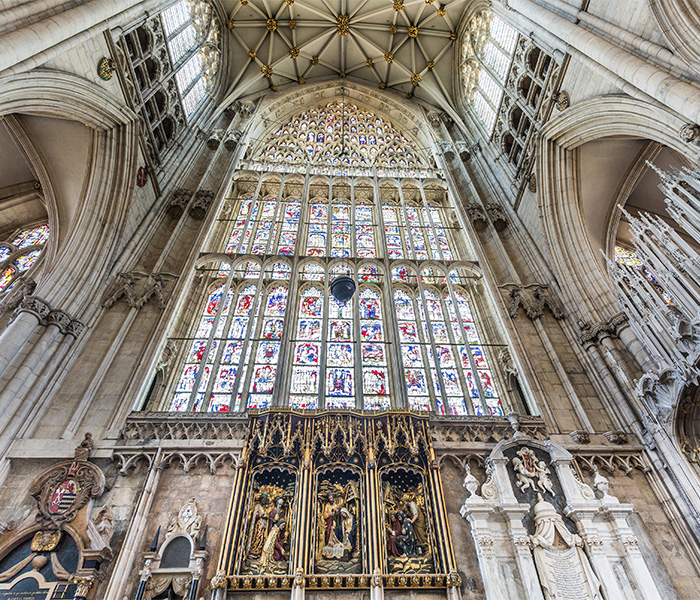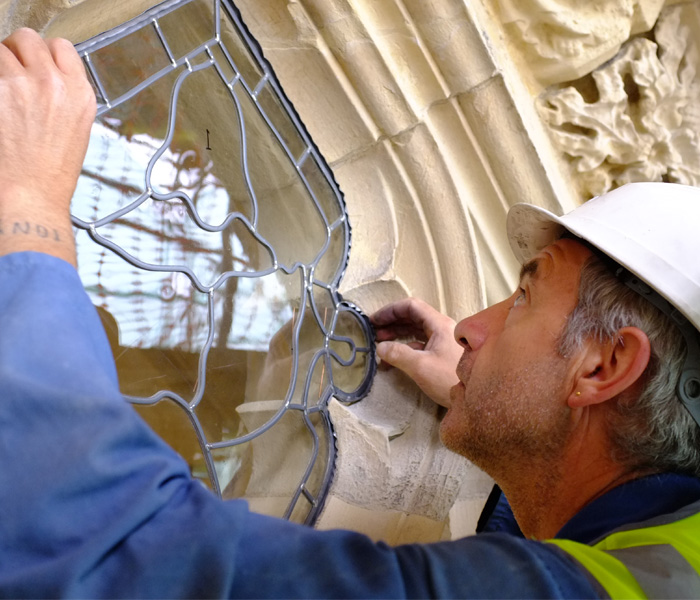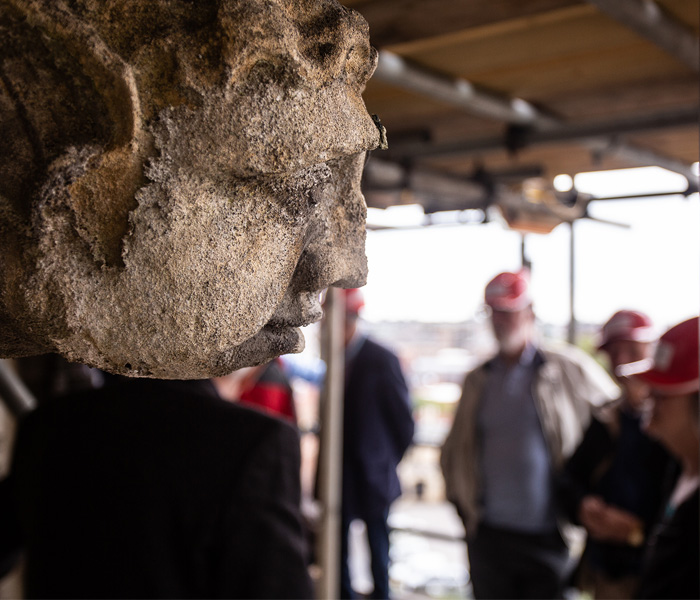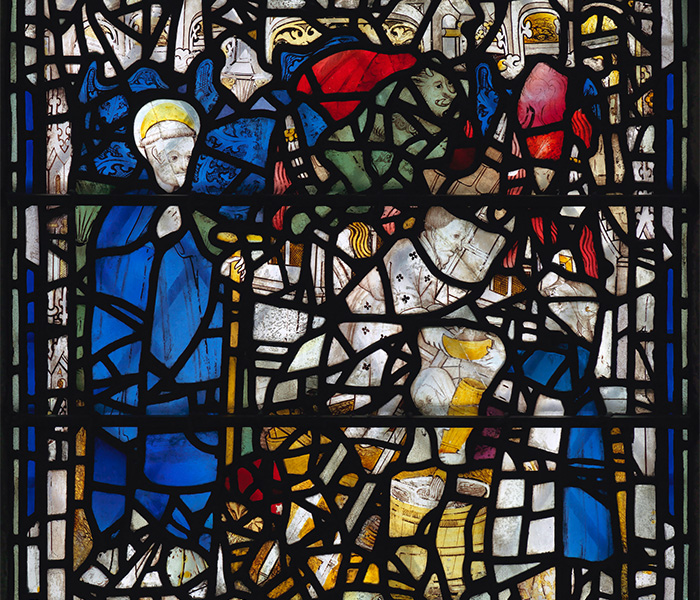Type your search below
Today we are open from
First admission
1:00 pmLast admission
4:00 pmTicket prices range from £13 to £28.
AdmissionsSee our What's On section for upcoming services and events
What's onVisiting York Minster.
VisitLocated in the cathedral’s South Quire Transept, it tells the story of the life and miracles of one of Northern England’s most significant saints. It is thought to date from c.1440 and is the only surviving whole stained glass window dedicated to the life of the saint.


Three great medieval windows
It is one of three great windows in the cathedral’s East End, which include the St William Window (c.1415) and the Great East Window, pictured left, (completed in 1408), both of which have undergone major conservation and restoration projects in the last two decades.
Now, after centuries of exposure to the elements, the stonework of the St Cuthbert Window and the wider South Quire Transept needs urgent work to replace and repair eroded and decaying masonry.
The conservation project is the subject of a major exhibition at the cathedral which opened in summer 2021 – Light, Glass & Stone: Conserving the St Cuthbert Window.


State-of-the-art protection
To allow the work to take place, all 152 panels of stained glass were removed from the St Cuthbert Window in spring 2021, allowing painstaking cleaning and repair work to be undertaken by conservators at York Glaziers Trust.
Once the stained glass has been repaired, it will be returned to the window with state-of-the-art protective glazing, replacing external diamond quarry glazing installed in the 1930s and providing a barrier between the elements and medieval stained glass.
The glass work is part of a wider 20-year partnership project between York Minster and York Glaziers Trust to install internally-ventilated protective glazing to the cathedral’s windows, which comprise the largest and most diverse collection of medieval stained glass in the country.


Stonework Conservation
The original stonework of the South Quire Transept in which the window sits dates back to the 1390s, when the medieval masons used magnesian limestone to create its complex structure and framework, including the buttresses and the window’s decorative elements.
In the 18th and 19th centuries this area of the Minster was repaired with a poorer quality of the same stone, which was unusually porous and weathered quickly, and in the 19th and 20th centuries this was compounded by the use of Ketton stone for repairs, which reacted with the original magnesian limestone.
The result is extensive damage to parts of the stonework, with large cavities in places. The Minster’s stonemasons are repairing the structural damage using traditional techniques supported by scientific analysis.


The life of St Cuthbert
St Cuthbert was an Anglo-Saxon monk and bishop of Lindisfarne, who lived between c.634 and 687 and was renowned for his good works and miracles.
Although his shrine was originally located on Lindisfarne, when the monks who lived there fled Viking attacks in the ninth century they carried St Cuthbert with them in his coffin and eventually settled at Durham, where his shrine can still be visited.
The window was gifted to the Minster by Thomas Langley (d.1437), Bishop of Durham, and a former Dean of York.
You can see the St Cuthbert Window in detail and learn about the stories its stained glass tells via a new resource developed by York Glaziers Trust. Click here to learn more and explore the window.
Stay up to date with York Minster